Caleb Wu
About Me
Resume
Product Design @RevisionDojo (YCF24)
About the Project
Innota Technology is an educational startup, gamifying learning through mind maps and flash cards. As the sole product designer, I worked to redesign the web identity in preparation for the products launch.
Project Directory
Innota
2024
Project
5 Weeks
Web & Mobile
Vision Project
Team
1 Designer (Me)
1 Front end
3 Backend
Loading video...
The Introduction
Innota Technology is an educational startup, gamifying learning through mind maps and flash cards. As the sole product designer, I worked to redesign the web identity in preparation for the products launch.
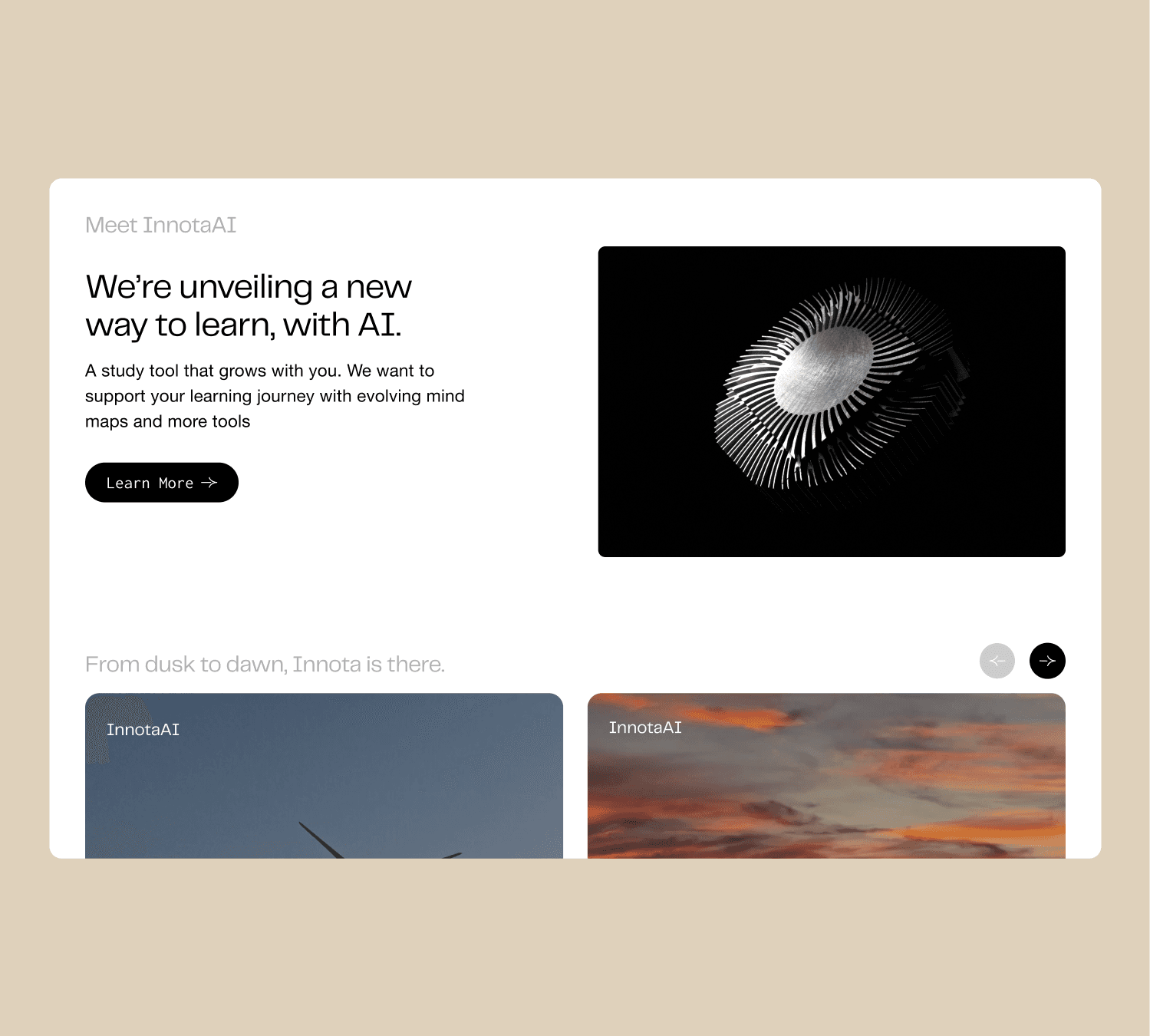
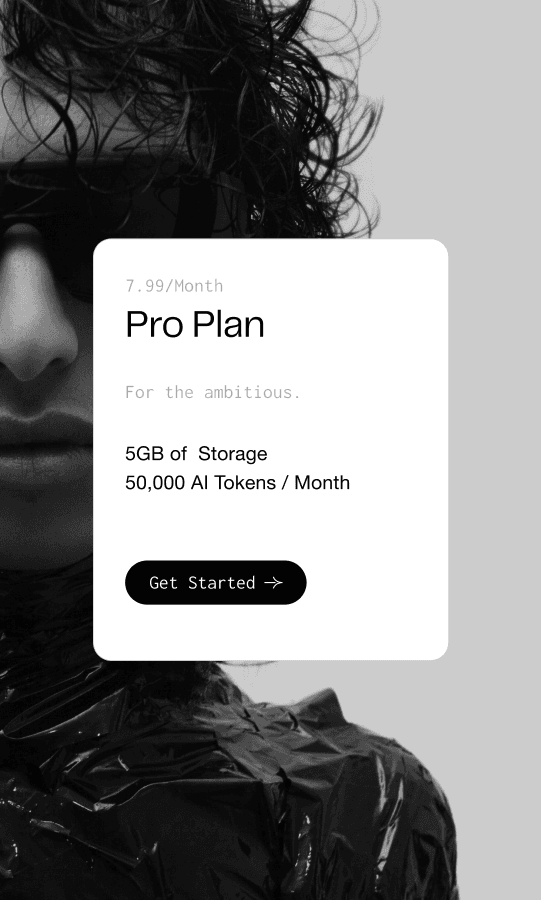
The Problem
None of the incoming web traffic was converting into users.

Solving the issue
I led a two-week user research campaign to understand why users weren’t converting.
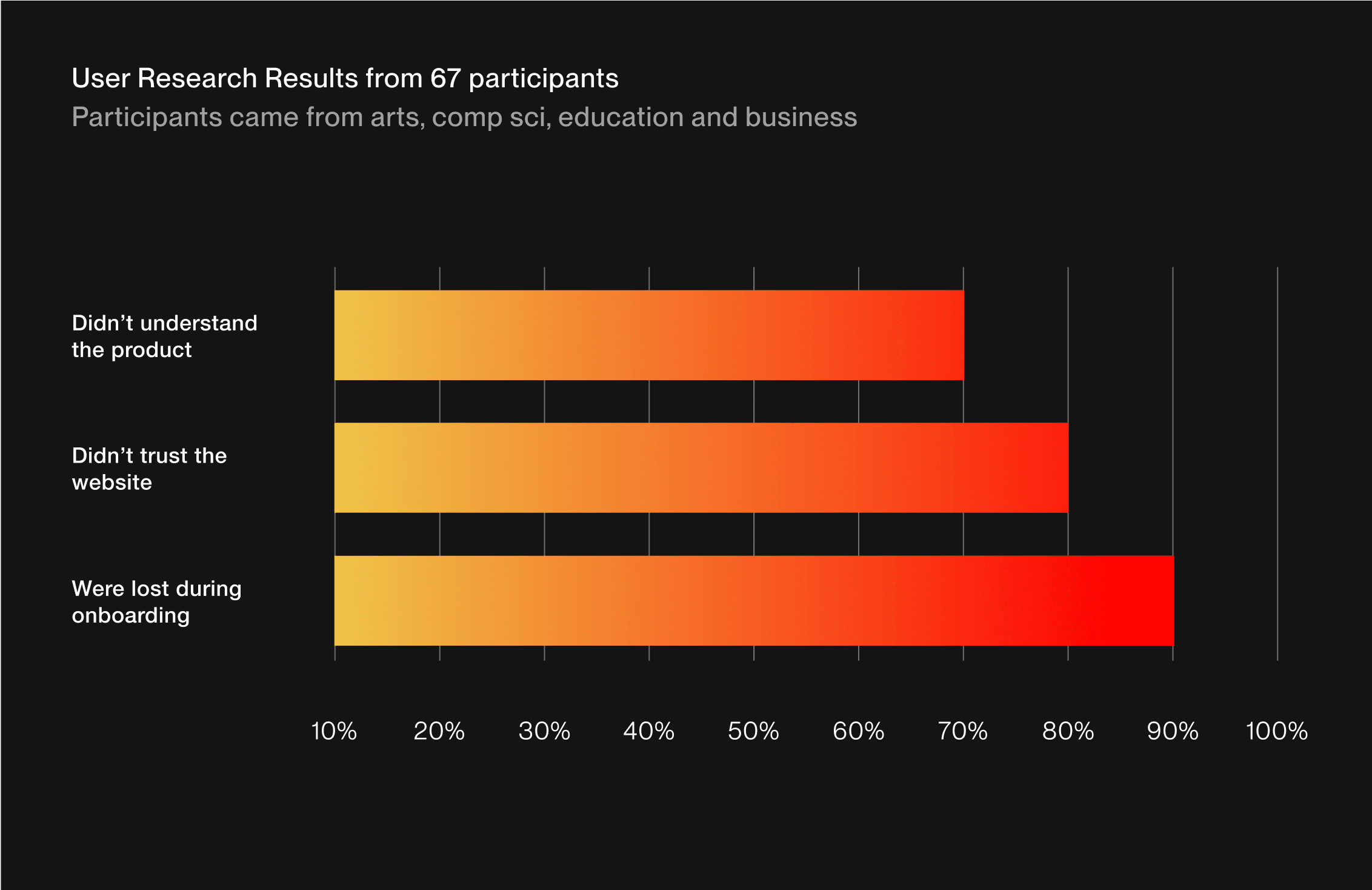
I launched a 2 week UXR campaign to gauge pain points, identify onsite friction and better understand the users. I primarily did outreach on Discord, Slack, and in person, surveying 65 participants
The Conclusion
Users didn’t trust the product due to poor design choices.
Goal #1
A web redesign was necessary in order to regain users trust.
The previous website was cluttered, featured inconsistent visual hierarchy, and featured poor design, making it difficult to navigate for new users.
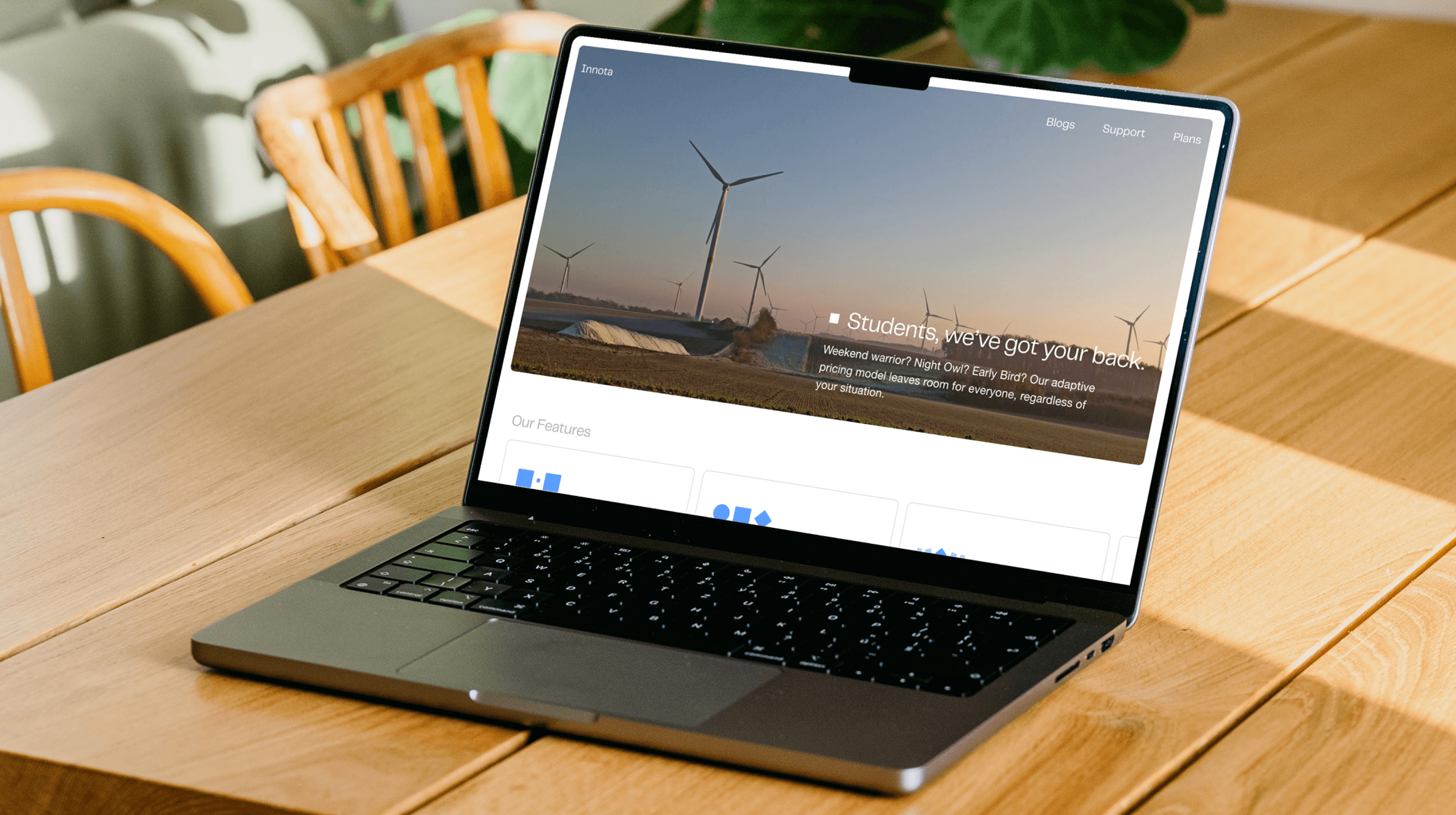
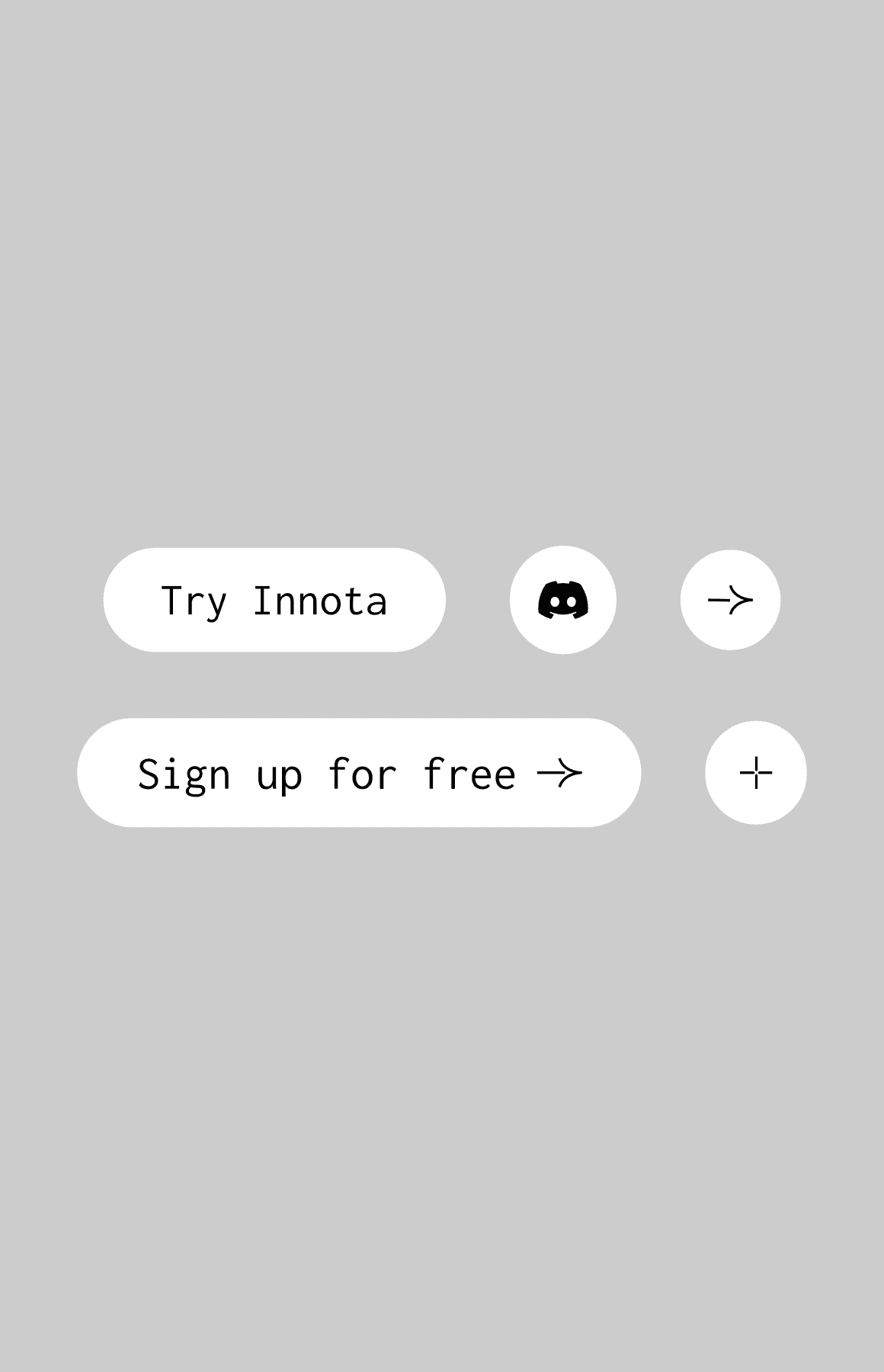
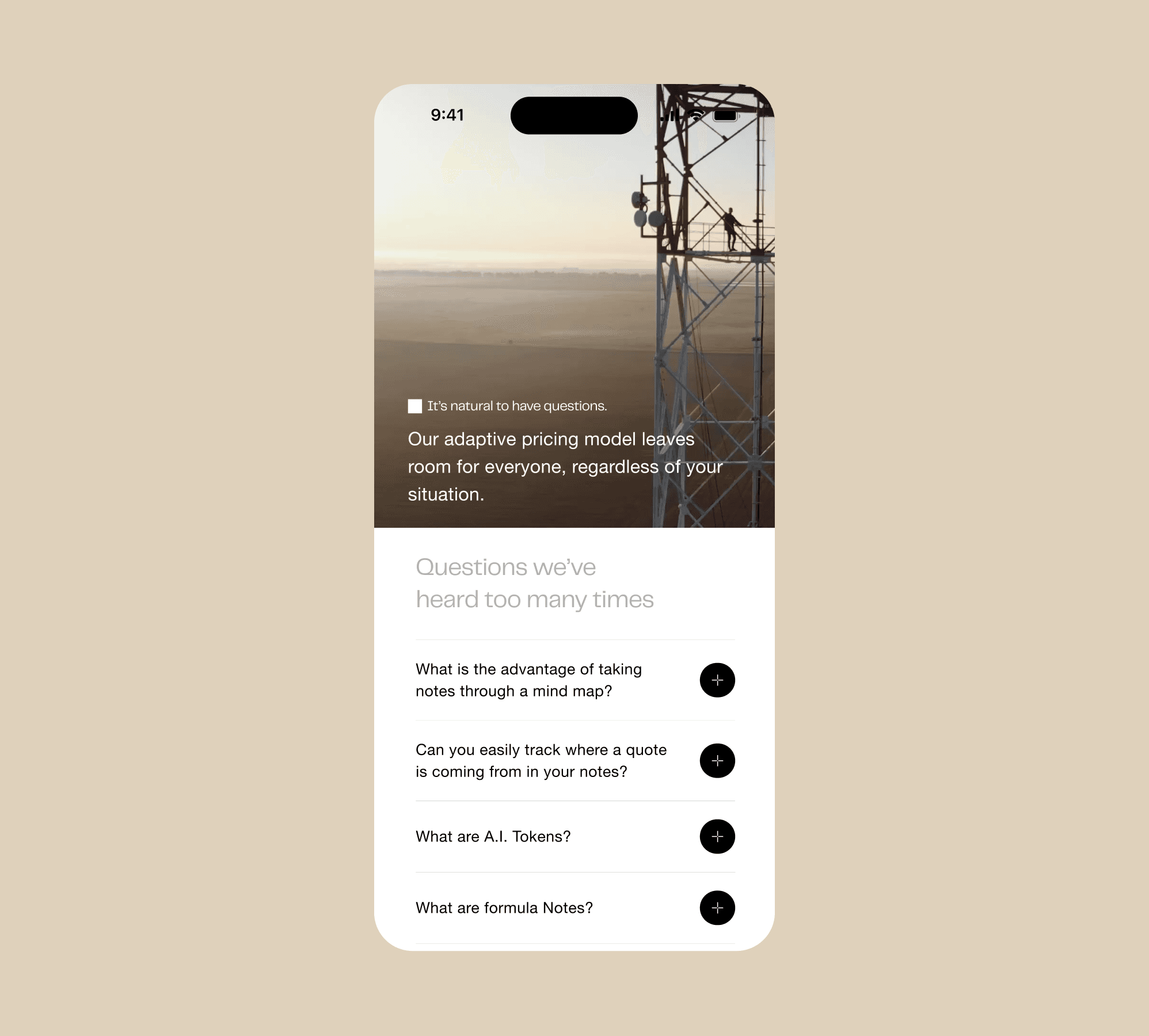
My Design Rationale
Users said the previous website was cluttered and visually confusing.
I rebuilt components to be simple and intentional. A black and white colour pallet made made interactions intuitive.


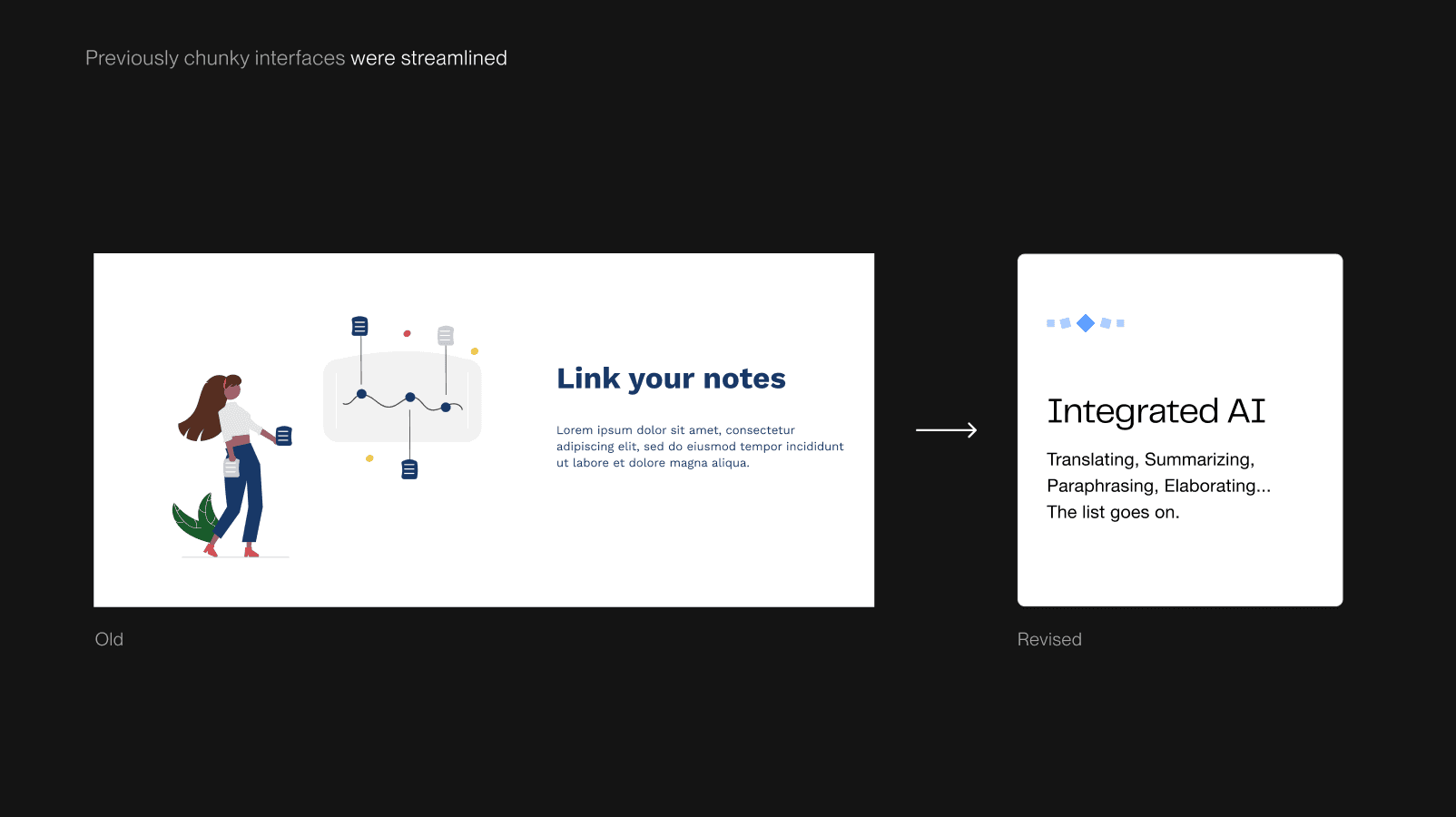
Inspired by other popular AI agents (ChatGPT, Perplexity, Claude ect..) I developed a new concise, clean and minimalistic interface.
Goal #2
Rebuilding an exhausting onboarding experience
Users needed to complete the onboarding sign up process in order to gain access to the web app. Insights from the UXR campaign indicated that we lost 80% of the users during sign up.

The old website failed to showcase the product, causing distrust in users.
I added a live demo on the homepage to inform users, highlighting the apps features.
I added a live demo on the landing page to highlight its functions upfront. This gave users a much better understanding of the web app, reducing distrust.
The highest point of friction in the onboarding process was the email confirmation. Users assumed the unbranded emails from Innota were scams.
I designed and coded custom emails to foster credibility and product authenticity.


The Handoff
As the only designer, I had to make sure that my work could be scaled & integrated seamlessly by a team that could barely use Figma.
One of the early concerns the executives had was about the websites scalability -- how to update it when I left. I handed off a design system so they could build and update existing components easily.
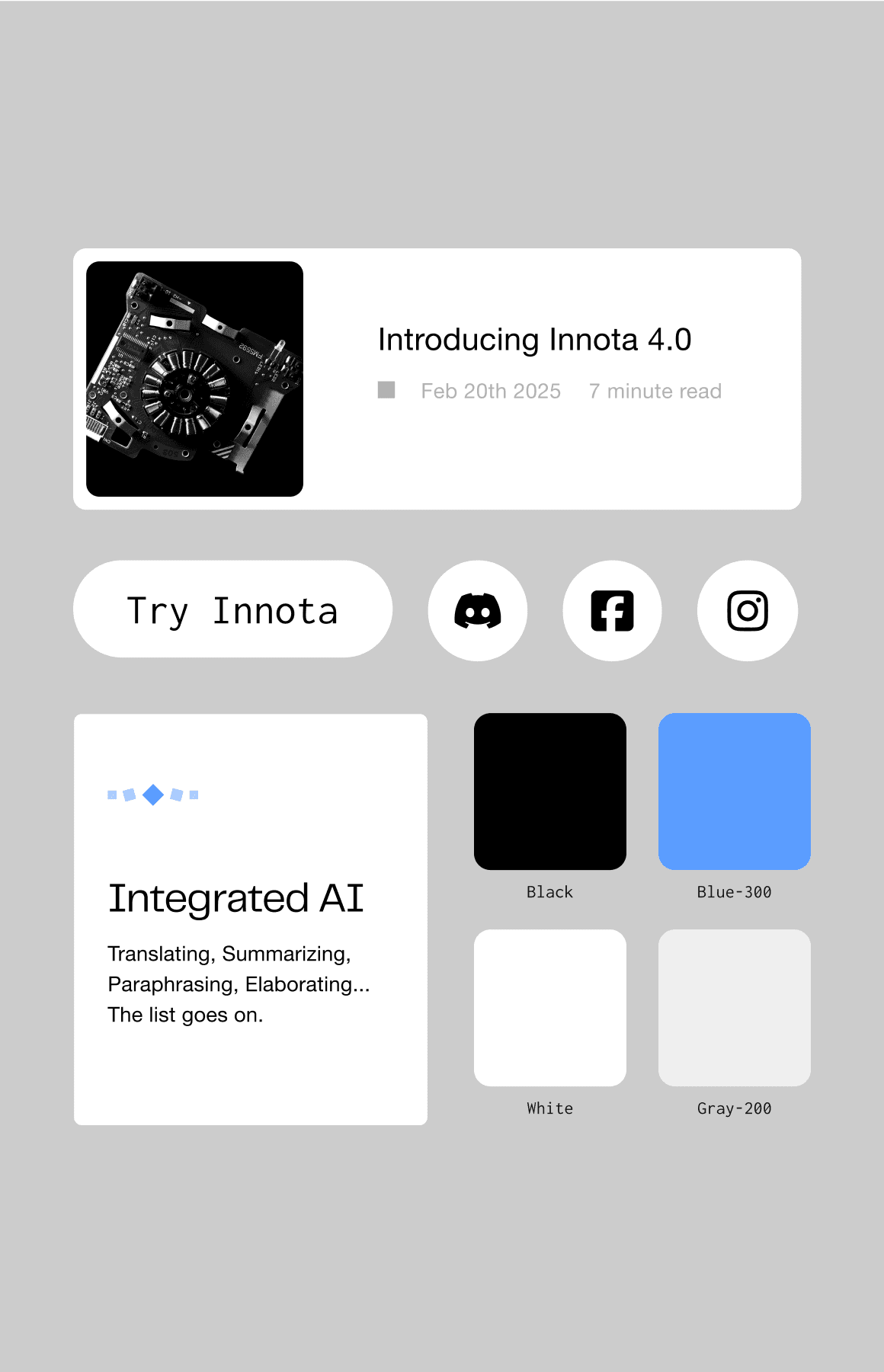
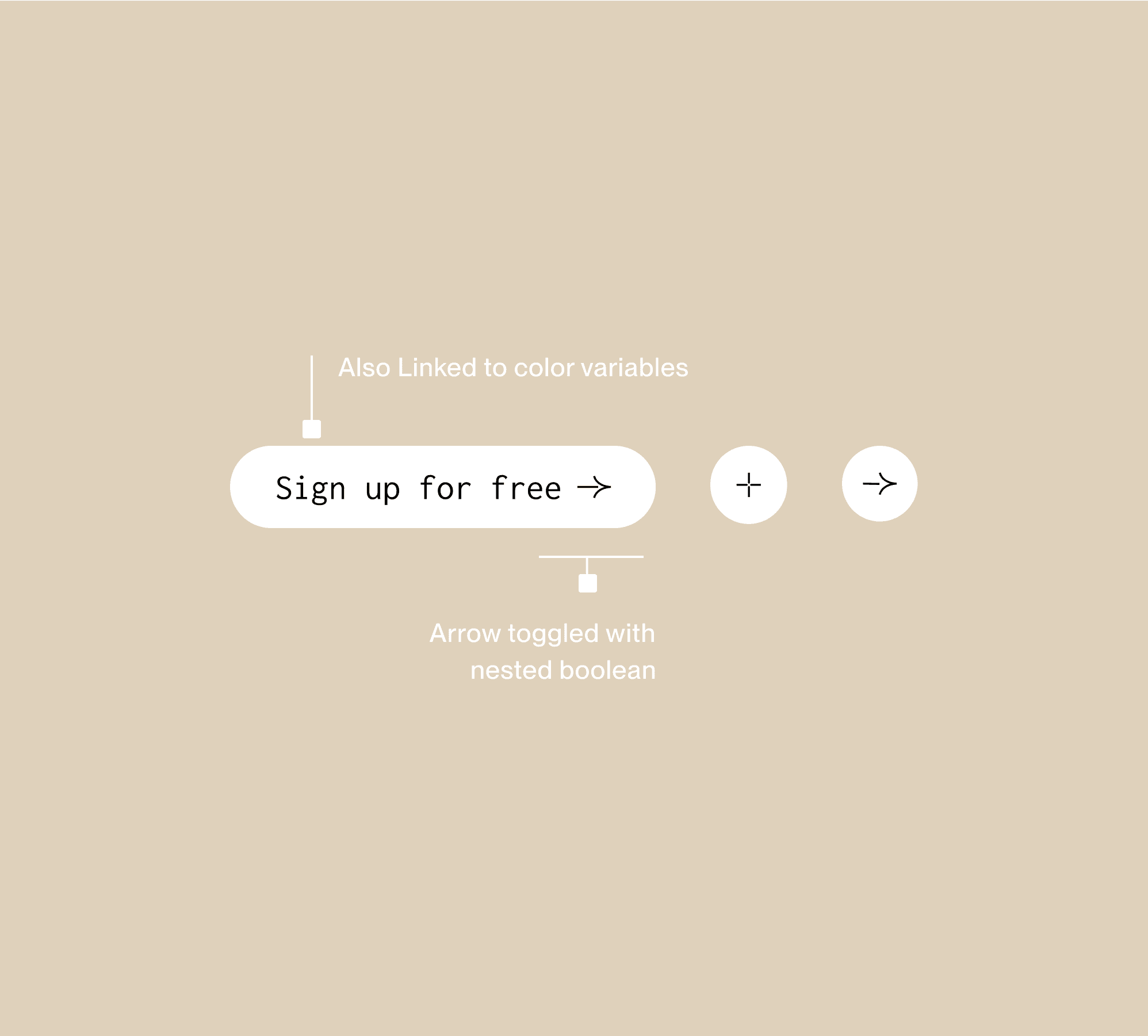
Next, I handed a prototype off to the development team to help them map interactions.
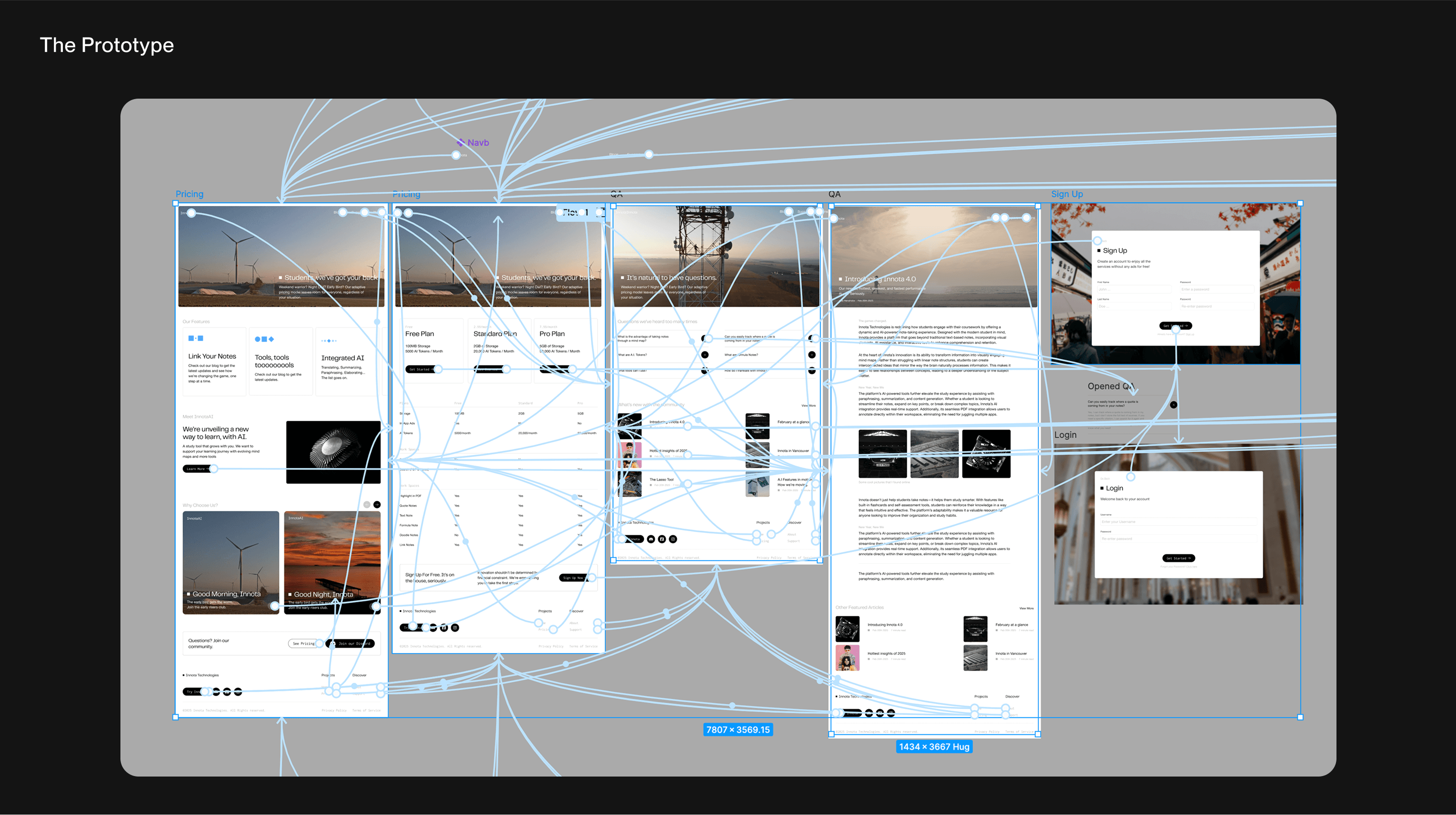
The Handoff
After 5 weeks, my time with Innota was over. My handoff included:
A Figma file loaded with the redesign
Fully prototyped mockup & Design system.
7x Custom Email Templates

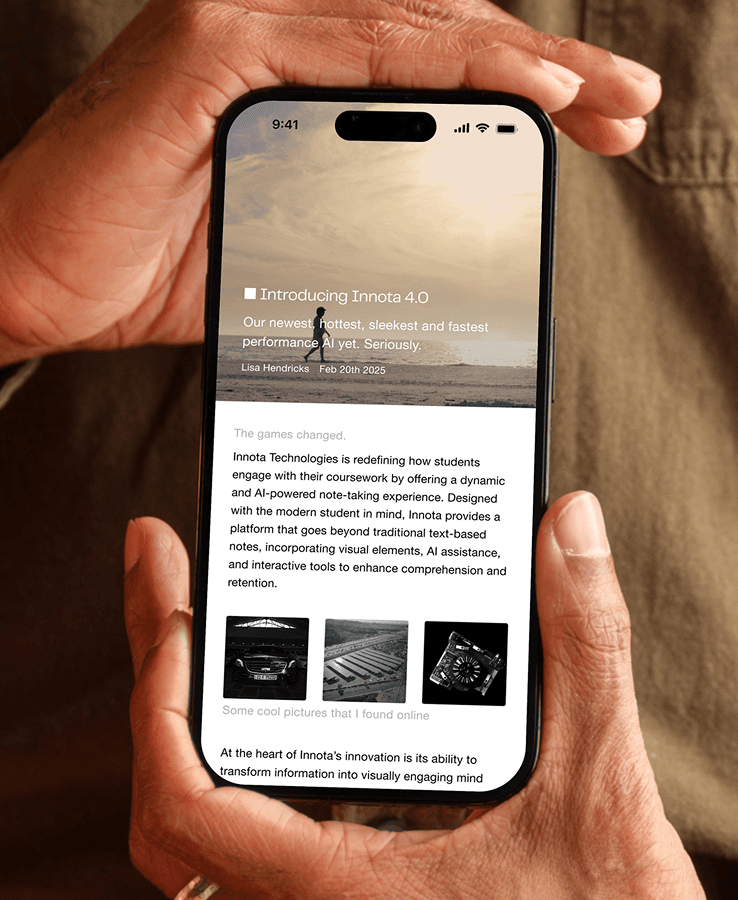
The Reflection
Being the sole product designer meant I had to learn how to make alot of decisions on my own.
Importance of Data Driven Insights
Learning to lean on the numbers helped me understand consensus on pain points -- and also justify my designs in weekly standups.
Moderating My Ideas
Given the teams tiny size, I had to learn how to understand which solutions could realistically be implemented.
Designer by Day

Dev by Night.
Loading video...
RevisionDojo
Product Design
Illustration
Loading Innota Technologies...
Loading Axis Consulting...